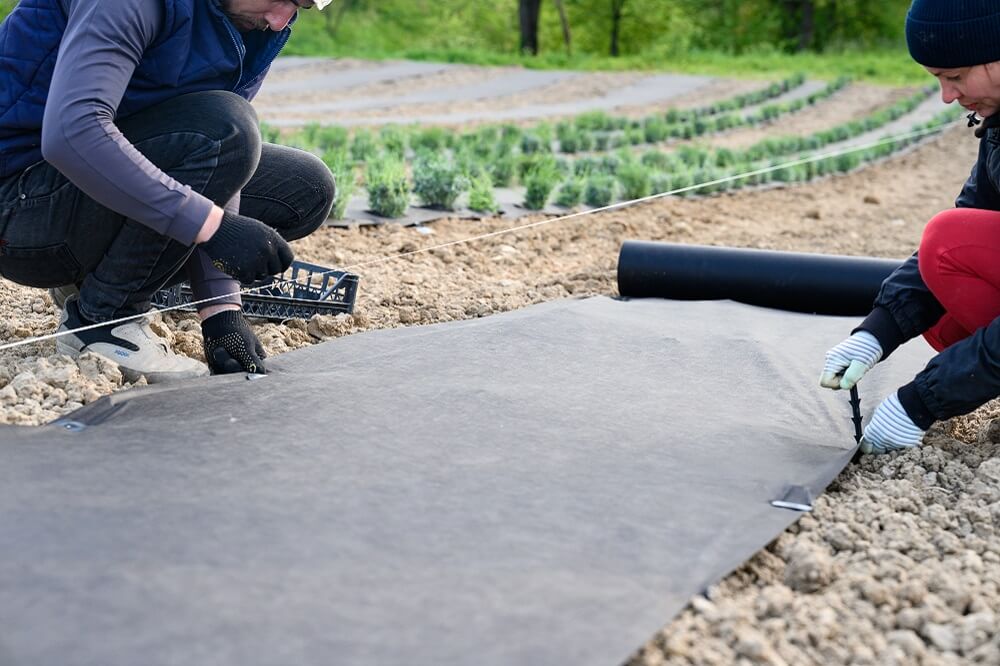
Agro fleece for weeds is an invaluable aid in the fight against unwanted plants in the garden. Above all, its use significantly reduces the need to use chemical herbicides, which is good for both the environment and plant health. The main benefits of using agro-textile include:
By using agro-textiles, you can also save a significant amount of time and labour that would normally be spent on weeding. Knowing, what kind of agro-textile for weeds will be the best, we can enjoy healthier plants, which translates into higher yields and a more beautiful garden.
Choosing agro-fibre for weedsIt is worth paying attention to a few key factors that will ensure its effectiveness and longevity. First of all, the material from which the agro-textile is made plays an important role. Some are made of polypropylene, known for its strength and weather resistance. Another important aspect is the durability of the agro-textile. The thicker and stronger the fabric, the better it will block out light while providing long-lasting protection against weeds. Colour also matters — white, green and black are available. For weed protection, it is best to choose the latter option.
Attention should also be paid to water permeability. Suitable agro-textile weed control should allow water and air to flow freely into the soil, which promotes plant health. A well-chosen agro-textile will not only protect against weed growth, but also improve soil moisture, which is crucial for soil fertility. Knowing these aspects makes it easier to decide, what kind of agro-textile for weeds will be the best for our garden.
When choosing a weight, the type of soil and the intensity of sunlight in the garden should be taken into account. For light sandy soils and moderate sunshine, a 50–70 g/m² agro-textile will be suitable. Such a fabric is effective in blocking out light while providing adequate water and air permeability. However, for heavier clay soils and areas with strong sunlight, a higher weight agro-textile of 100–120 g/m² is recommended to better protect against weeds and soil erosion. Lighter agro-textiles, with a weight of 30–40 g/m², can be used for temporary covers in flower or vegetable beds. Choosing the right grammage will help maintain the health of the plants and the effectiveness of the agro-textile depending on the specific garden conditions.
In order to make effective use of agro-fibre for weedsThe soil must be properly laid in the garden. First prepare the soil properly: remove all visible weeds, stones and other dirt, and then dig it well and level it. This will avoid unevenness and ensure better adhesion of the fabric to the ground. A key step is to spread the agro-textile fabric. in an even manner so that every part of the surface is adequately covered. It is important that the fabric is not too tight or too loose.
Then, in order to prevent the material from moving, it needs to be fixed properly. This can be done with special pins or fixing pins, which are driven into the ground every 50 cm or so. Finally, the areas around the plants can be gently exposed by pulling the agro-textile to the sides, which will ensure that the plants can grow freely.
When using agro-textile weed control The most common mistakes are inadequate soil preparation and inadequate fixing of the fabric. Poor soil preparation, such as leaving weed debris, stones or an uneven ground, can affect the effectiveness of the agro-textile, leading to unevenness and areas where weeds can break through. To avoid this, thoroughly remove all weeds, stones and other debris and level the ground before spreading the fabric to ensure better adhesion of the material.
Another mistake is not fixing the agro-textile fabric properly. Pieces of fabric that are too loose or sagging can easily shift under the influence of wind or water, creating gaps through which weeds can penetrate. To ensure effectiveness, agro-textile should be securely fastened to the ground using special fixing pins at approximately 50 cm intervals. It is important that the fabric is well tensioned. By knowing these mistakes and how to avoid them, you can use the agro-textile effectively and provide protection against weeds.